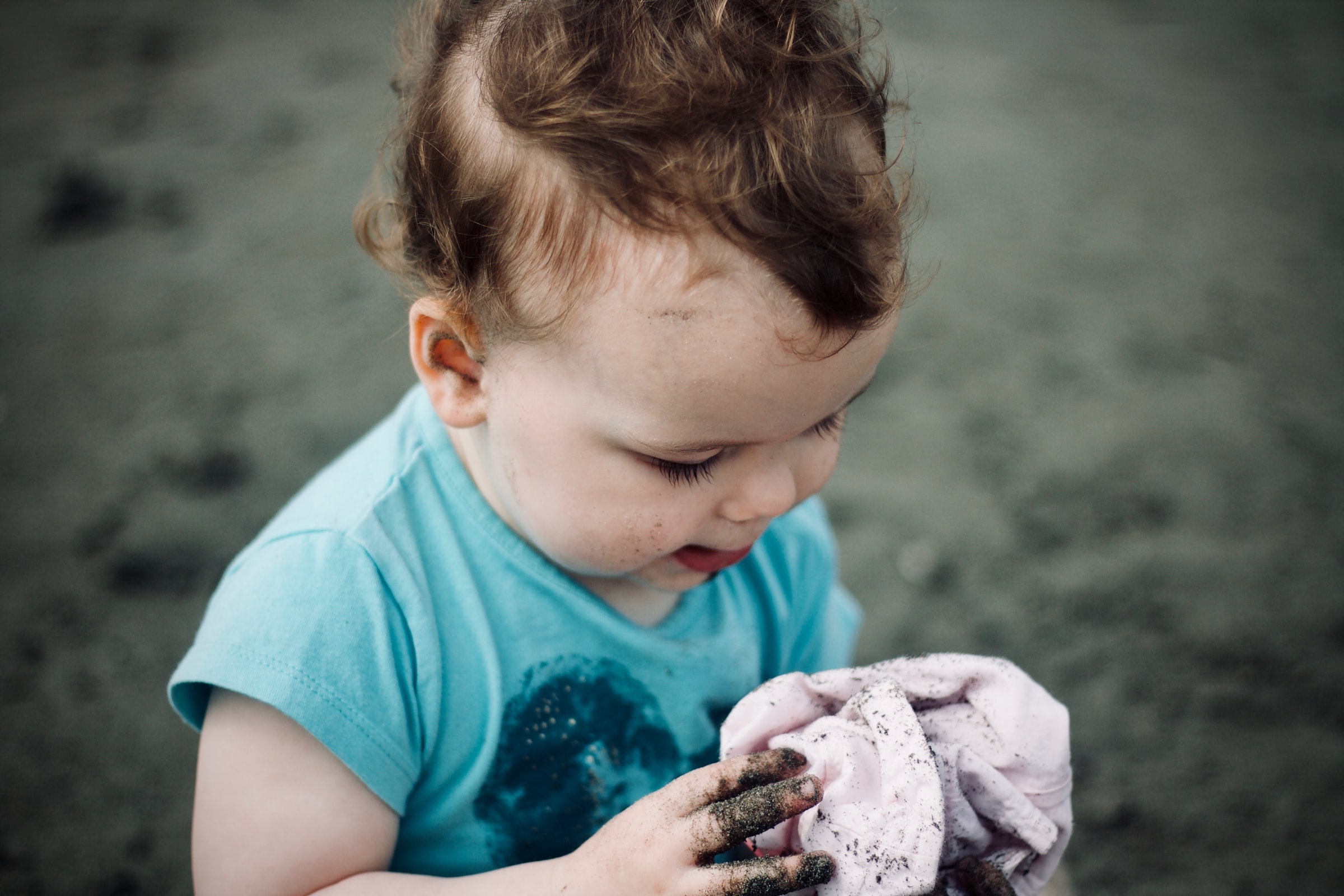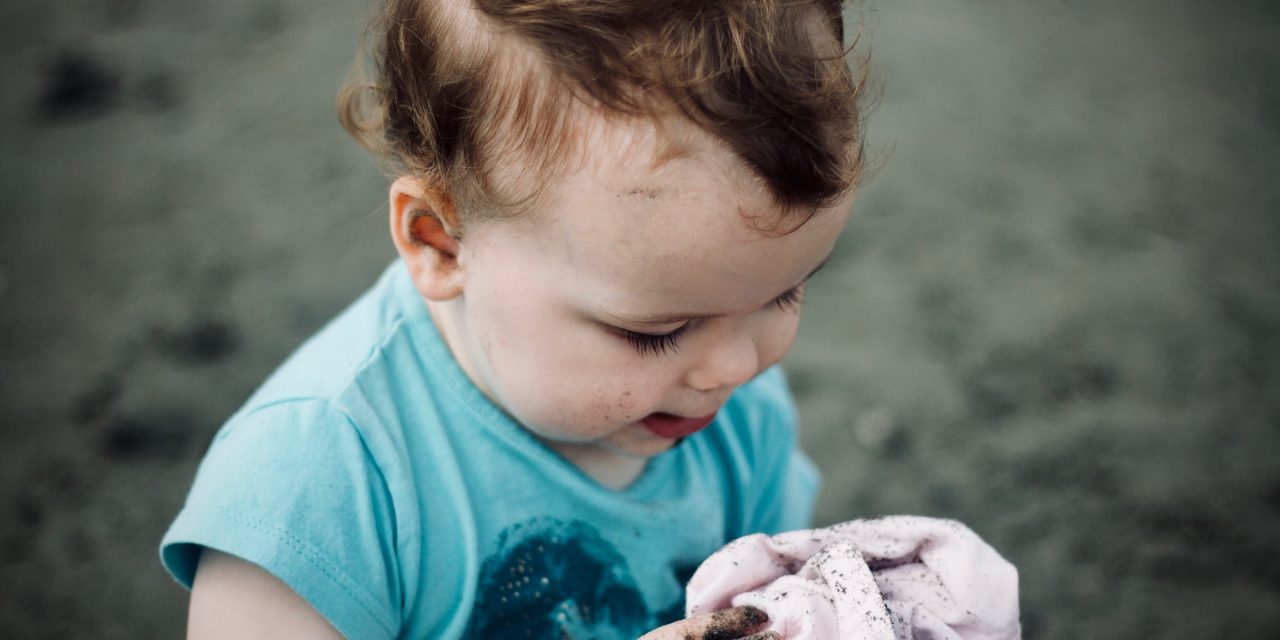You must have surely heard a little about hand, foot, and mouth disease in children, among the list of other infections and viruses. The good part is this infection is not as fatal as other ones, but still, you need to be aware of its symptoms. To know more about how you can protect your child from this infection, continue reading our article on hand, foot, and mouth disease in children for a better, and deeper insight.
What Is Hand Foot And Mouth Disease?
Hand, foot, and mouth disease (HFMD) is extremely contagious and is found commonly in children under the age of 5. Although this infection can affect a person of any age, children are affected the most because of their childcare setting. They are still undergoing frequent diaper changes and toilet training and they tend to put their hands in their mouths more often. Thus, there is an increased chance of transferring the infection. However, the child receives immunity to the infection once they have contracted it, so that’s why children over 10 years rarely contract this infection.

Hand foot and mouth disease in children is contagious, so it becomes even more important to be aware of it.
Despite it being highly contagious, it’s a pretty mild infection as compared to the others. It usually dissolves within a week or so, but it may take longer if there are any complications. You will notice your baby having rashes on their hands and feet, sores, or ulcers in their mouth, which are the primary indicators of the infection. Seek medical aid immediately if your baby shows signs of extreme pain, or even when you notice the outbreak of these blisters and rashes. This infection is usually spread in summer, so you’ll want to take extra precautions during those months.
Just a side note – HFMD should not be confused with foot-and-mouth disease (also known as hoof-and-mouth disease). This is a very common misconception as foot-and-mouth disease is contagious only among farm animals. You can’t contract foot-and-mouth disease via your pets, nor can they transmit this infection to you.
Causes Of Hand Foot And Mouth Disease
The infection is caused by coxsackievirus, a virus that is a subset of a group of non-polio enteroviruses. And enteroviruses are spread either through sneezing, coughing, or when droplets of the infected strain touch any surface, thus contaminating it.
HFMD can be easily spread from one person to another. Your child might contract this infection through an infected person’s:
- Saliva
- Fecal matter
- Serum (fluid from blisters)
- Nasal or throat discharge
- Cough, or sneeze that results in spraying infected droplets in the air
As stated earlier, the infection is spread prominently in child care centers. To add to the list, you could include schools, and parks as major hotspots of transmission of this infection as well. However, you should know that a child, even after recovery from the symptoms, can still infect others. This is because the virus resides in the body for weeks, so that’s why it’s important to take complete care and precaution even after recovery. Also, the spread of the infection can be asymptomatic, that is without showing any signs and symptoms.
Symptoms
Here are some symptoms that are primary indicators of this illness. You or your child might get all or a few of them:
- Sore throat
- Fever
- Increased irritability
- Decreased appetite
- Red, blisters present on the gums, tongue, and inside of the cheeks
- Red rashes present over the soles of the feet, and the palms, even sometimes on the buttocks
- Drooling
When your child has contracted this infection, you will first notice fever. However, fever can mean any type of illness and HFMD will not be the first reason which will pop into your mind. When you find these rash-like symptoms, accompanied by blisters present in the mouth, then you know for sure it’s this infection. The blisters and rashes don’t show up until one or two days after the fever.
When To See A Doctor
Hand, foot, and mouth disease in children is a minor contagious disease that usually dissolves after several days. However, if the symptoms worsen, or your child is finding it difficult to swallow fluids due to the sores, then it’s better to show them to the doctor.
Possible Complications Of Hand Foot And Mouth Disease
The most common complication is dehydration, where HFMD is concerned. Since the child finds it difficult to swallow due to the present sores in the mouth, they might not drink a lot of fluids. In severe cases, the child might even be rushed to the hospital for an IV if the body is completely dehydrated. That’s why it’s necessary to encourage your infant to sip water from time to time to avoid any complications from happening.
In some extreme cases, this infection can affect the brain as well and cause further complications:
- Viral meningitis: A viral infection that includes inflammation of the membranes around the brain and spinal cord.
- Encephalitis: A potentially life-threatening viral infection that causes inflammation of the brain. Such cases are very rare.
Treatment Of Hand Foot And Mouth Disease
Your doctor might suggest a couple of treatments to ease the symptoms of this mild infection. Some of these are:
- Prescriptions of ointments to relieve the pain of blisters and rashes
- Pain medication for headaches
- Certain medical syrups or tablets to relieve sore throat
Apart from that, you can also use certain home remedies in addition to clinical ones:
- Make your child do warm salt water gargles to relieve pain from the sores. Do this as frequently as possible throughout the day till the infection is terminated.
- Have cold beverages, or suck on popsicles, or eat ice creams.
- Avoid carbonated drinks, citrus fruits, and foods that are spicy or salty.
How Can This Disease Be Prevented?
You can take several precautions to avoid contracting this infection. Although it is mild, it’s better to follow the saying: “prevention is better than cure.”
- Wash your hands thoroughly: This is important especially after changing diapers and using the washroom. Wash thoroughly with soap and water, and if that is not available, hand wipes or sanitizers will do the trick.
- Clean common areas well: Bedrooms and living rooms are common hub spots of infection. That’s why it’s important to disinfect these areas with soap and water and then with diluted bleach and water. While you’re doing the common areas, clean your child’s soft toys, and pacifiers too, since the infection can remain on them for days.
- Teach proper hygiene to your children: Encourage your children to wash their hands before meals, and explain why it’s best not to put their fingers, or any object in their mouth.

By maintaining proper hygiene and cleanliness, one can avoid hand foot and mouth disease in children to quite some extent.
Conclusion
Hand, foot, and mouth disease in children is usually not serious, but it is quite contagious. But, with a couple of home remedies, and advice from your doctor, your child should feel better in a few days. To prevent your child from getting other infections, following a vaccination schedule is important. To help you to keep track of all your child’s immunizations, you can also make use of apps like ImmunifyMe. In addition to that, you can schedule appointments with your pediatrician virtually, and even store prescriptions.
FAQs On Hand Foot And Mouth Disease In Children
What Should I Do If My Child Has Hand Foot And Mouth Disease?
The first thing you can do is contact your physician. They will give you proper advice on how to handle the situation and if any extra treatment is required to soothe the symptoms. In addition to that, you can try a couple of home remedies such as salt water gargling, having ice creams, and avoiding spicy or salty foods.
How Does A Kid Get Hand, Foot, And Mouth Disease?
Common areas such as living rooms, or daycare centers are known for immense transmission of germs, and infections. HFMD is spread when a healthy person comes in contact with an infected person – that would be a direct transmission. Other ways could be either through indirect contact with saliva or when in contact with infected surfaces.
What Is The Quarantine Period For Hand, Foot, And Mouth?
Even before symptoms develop, HFMD is highly contagious during the incubation period (3-6 days). However, the infection can still reside in the person for weeks even after the incubation period. It’s best to consult your doctor to know about the precautions you will need to take.






